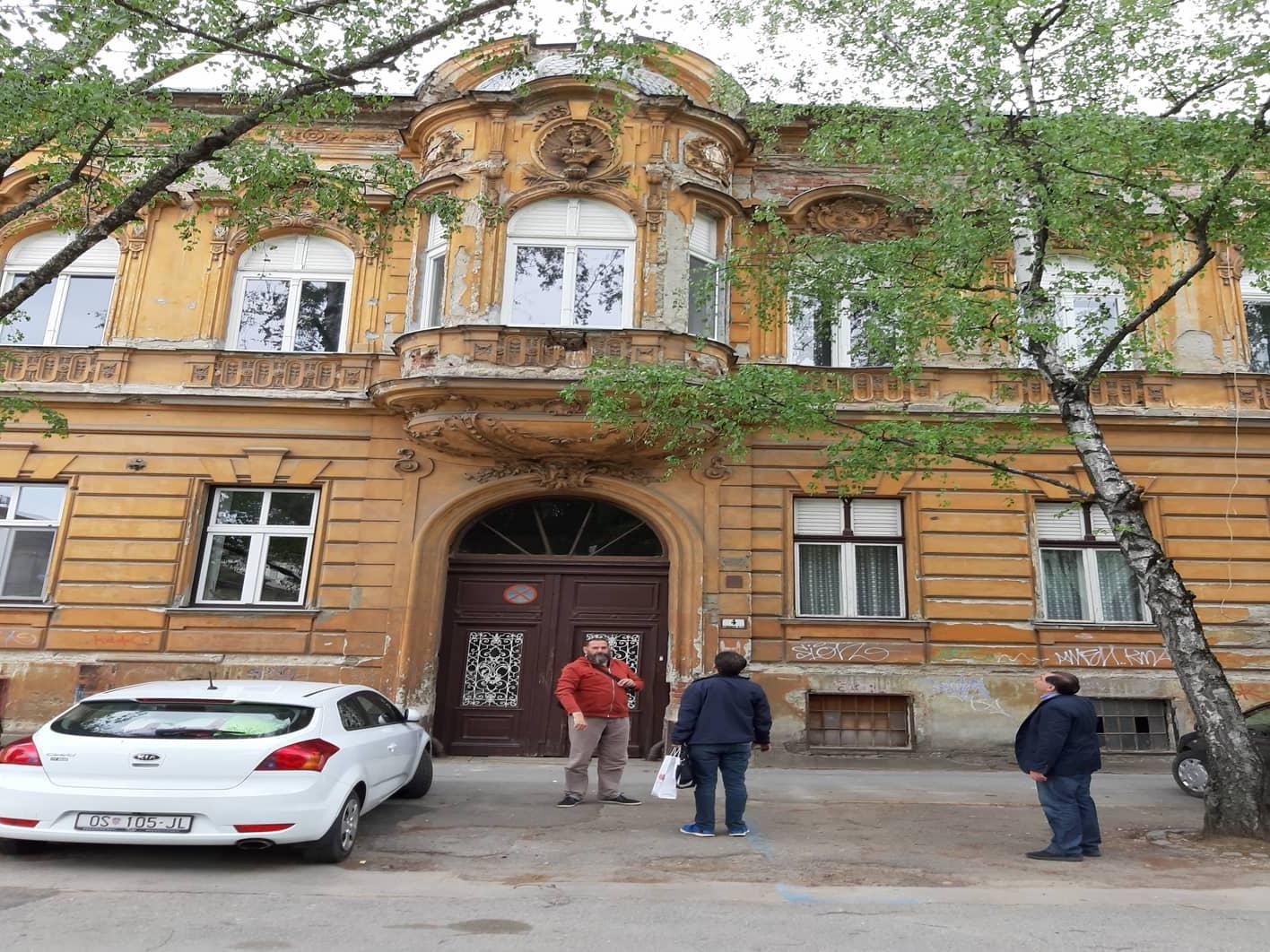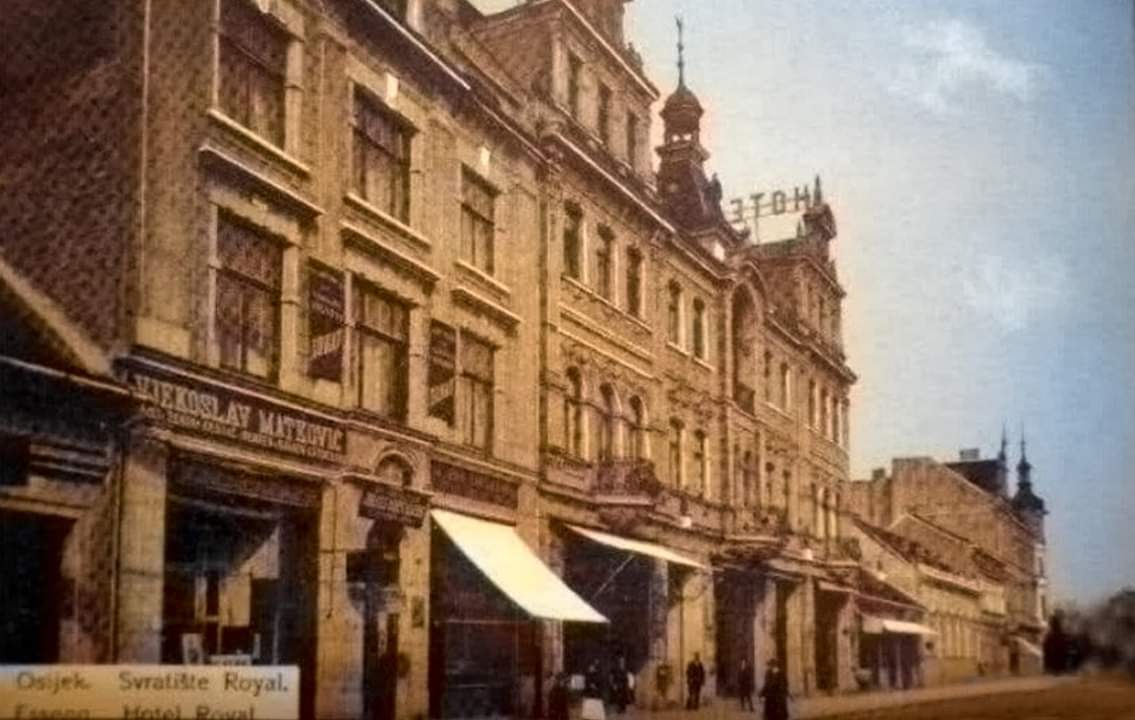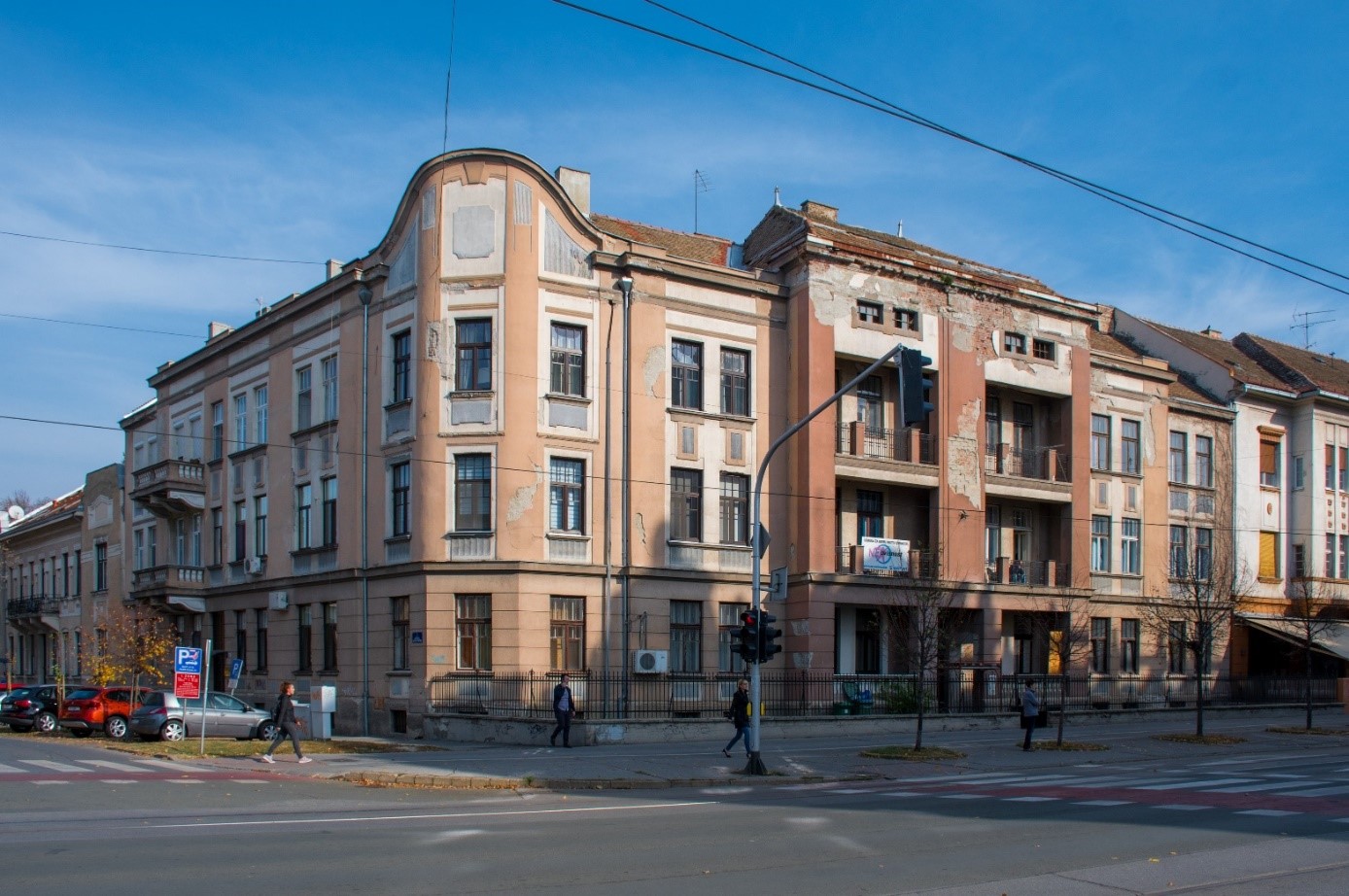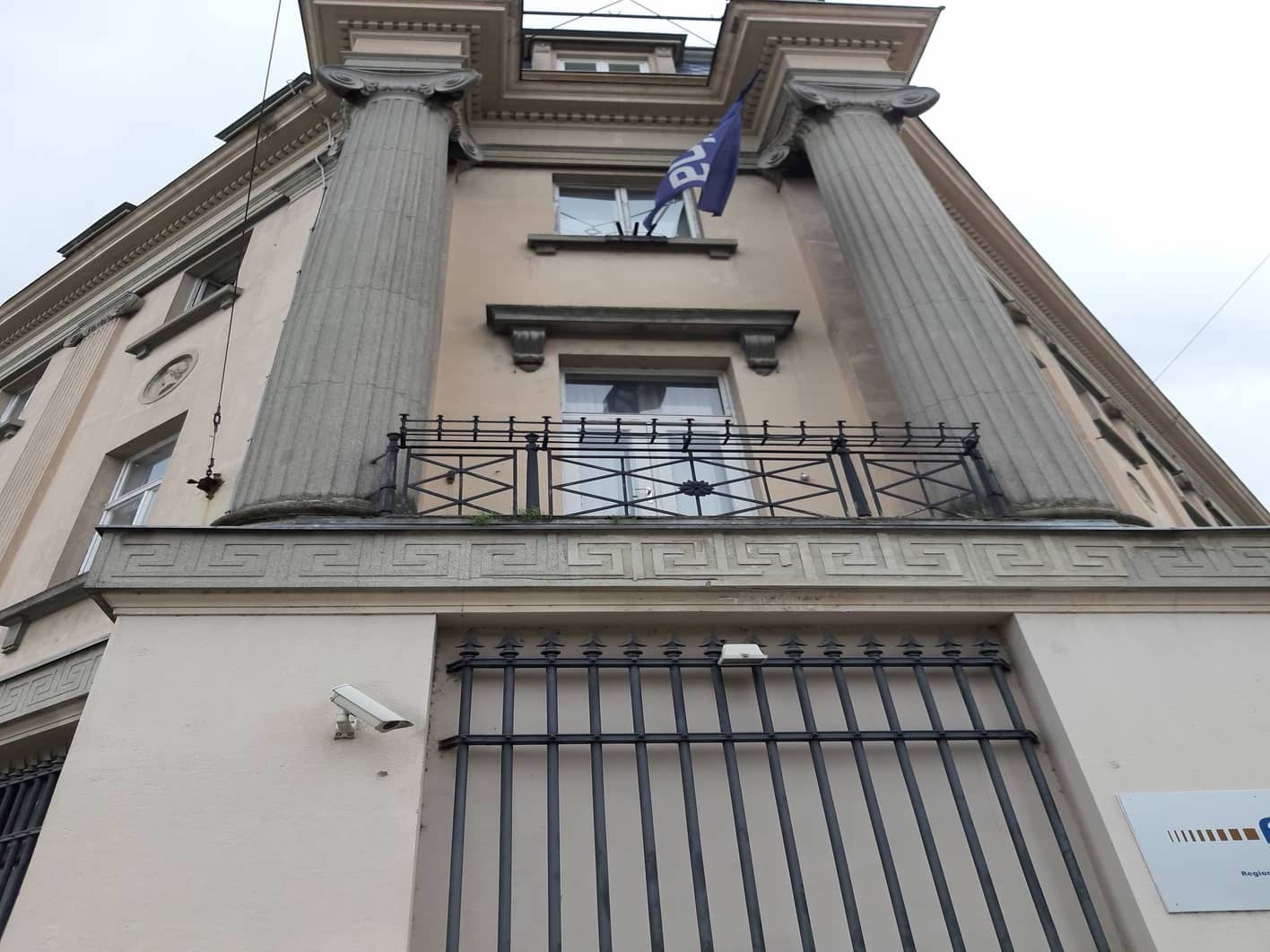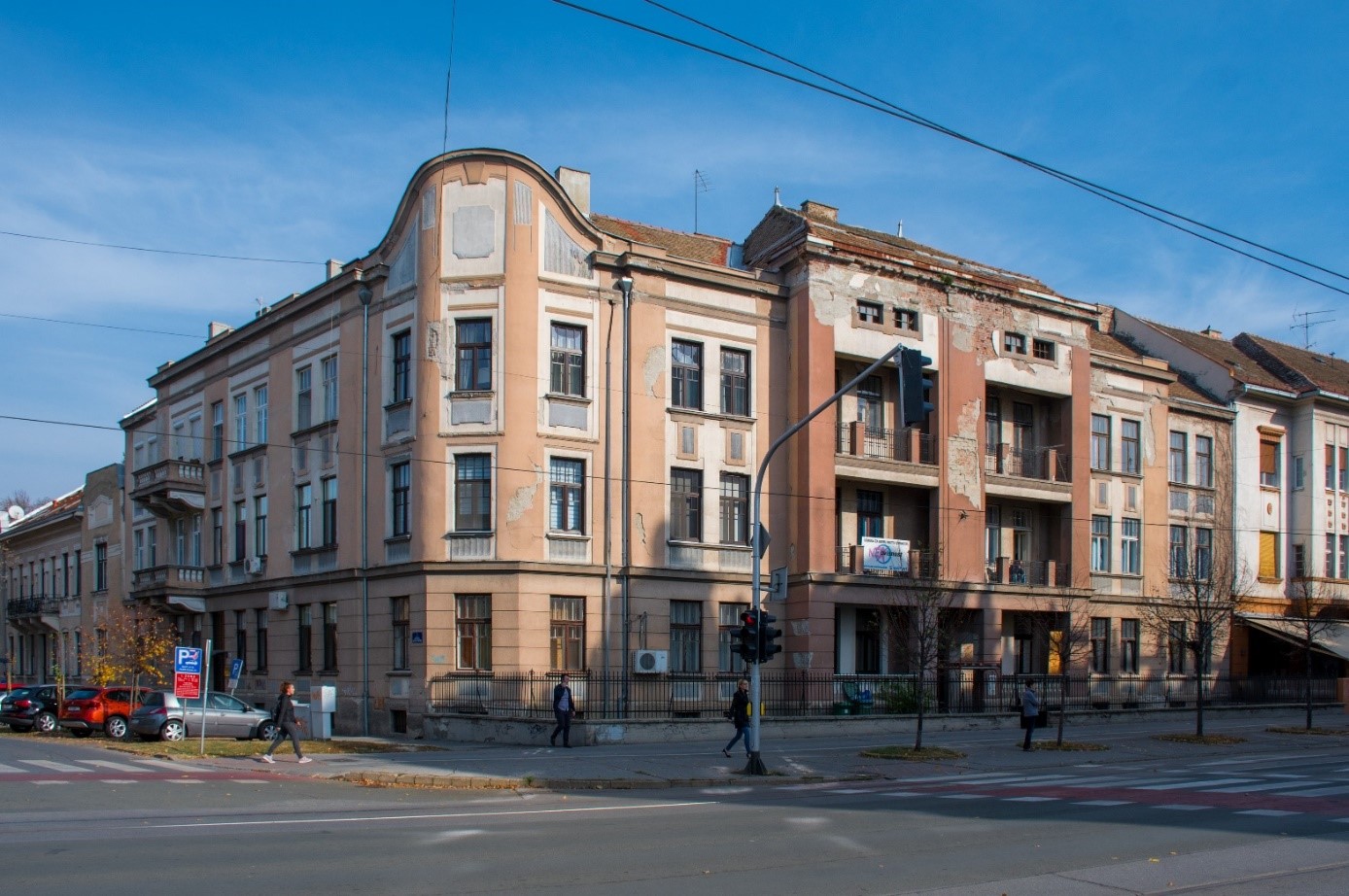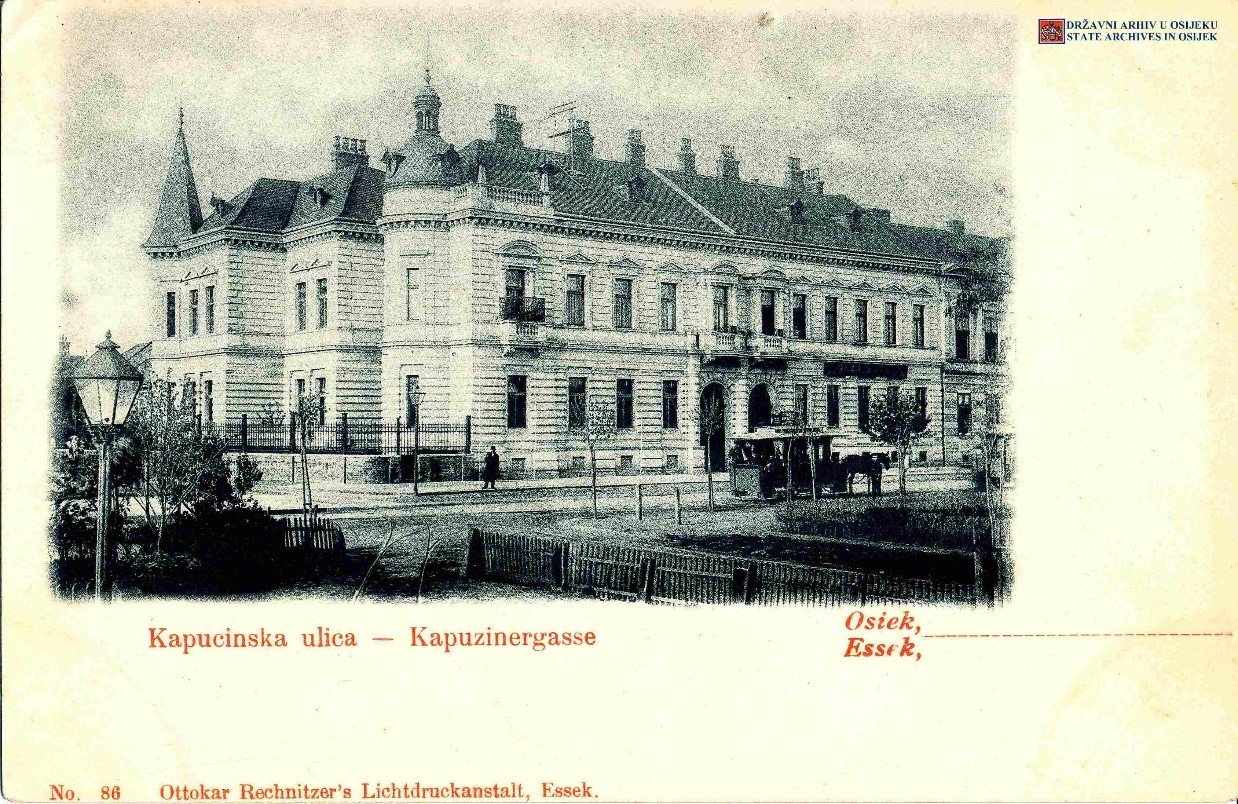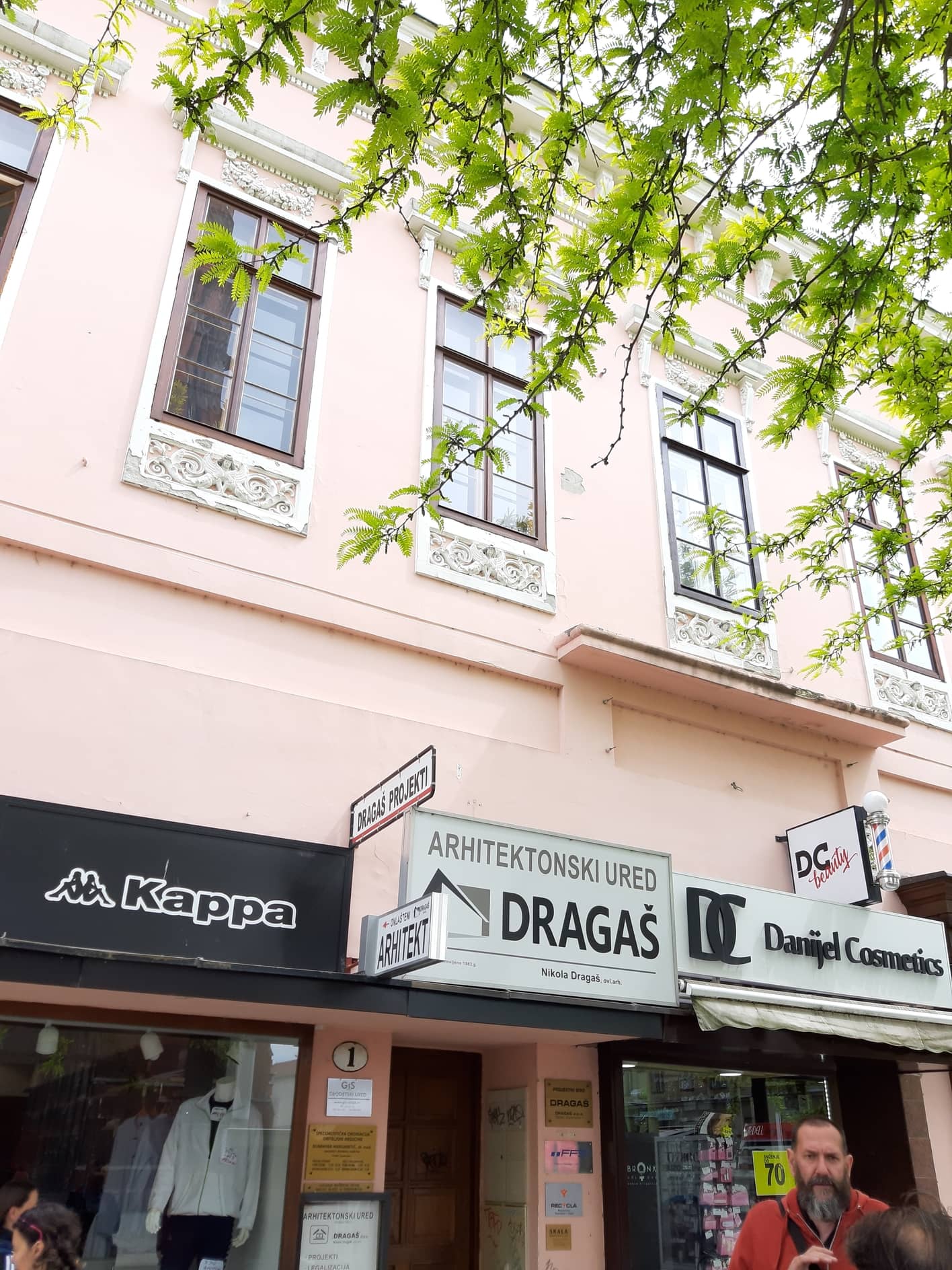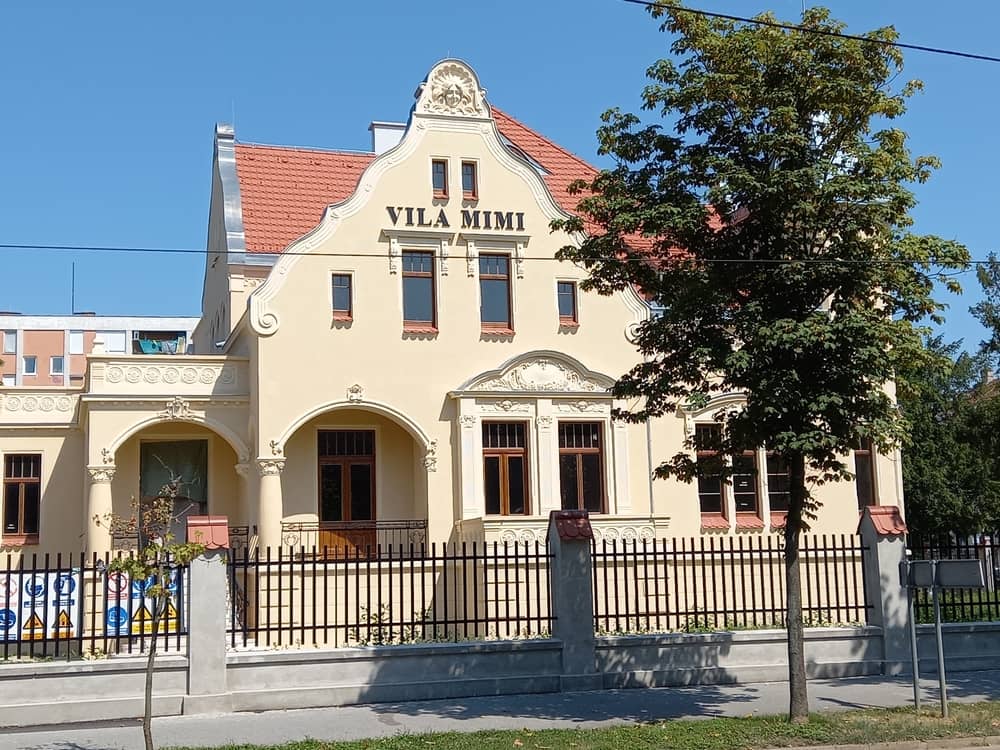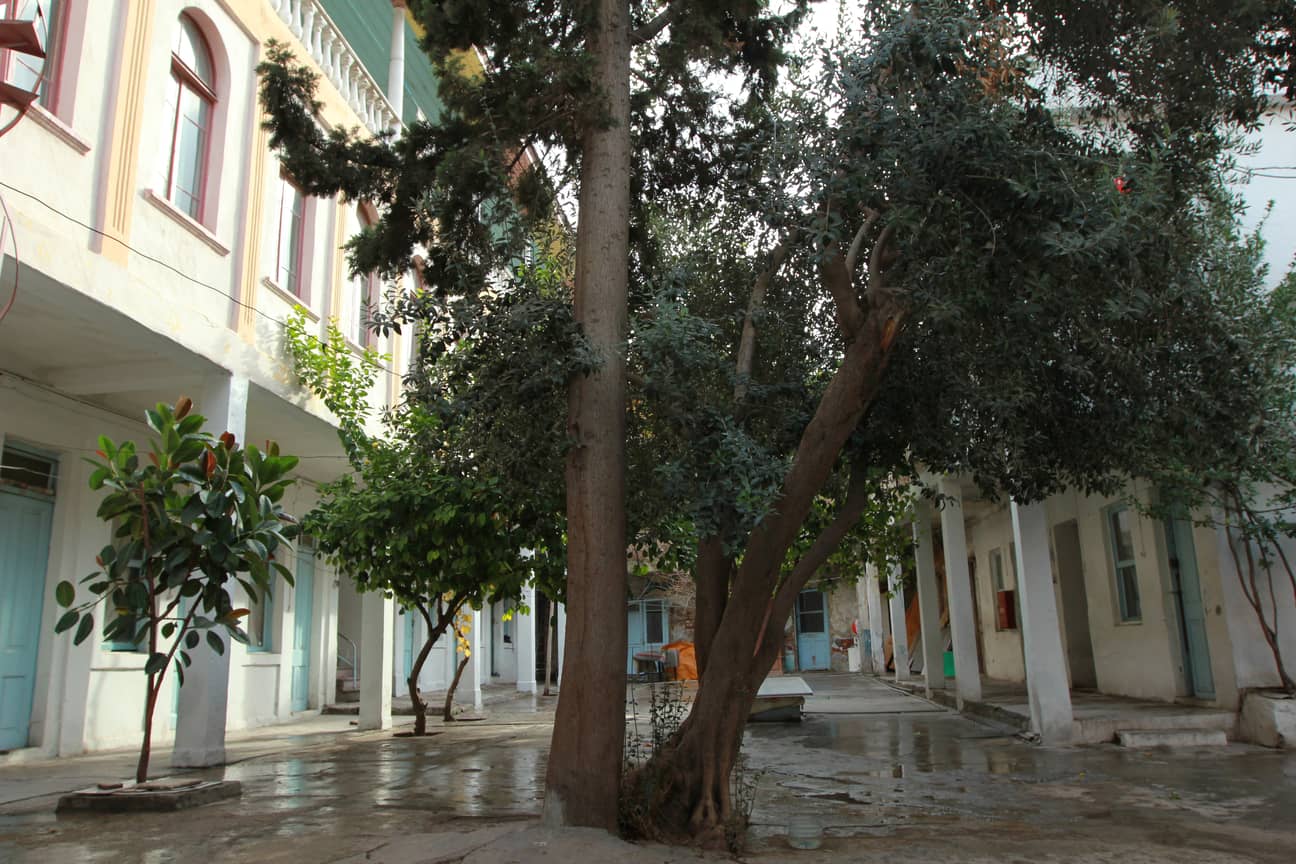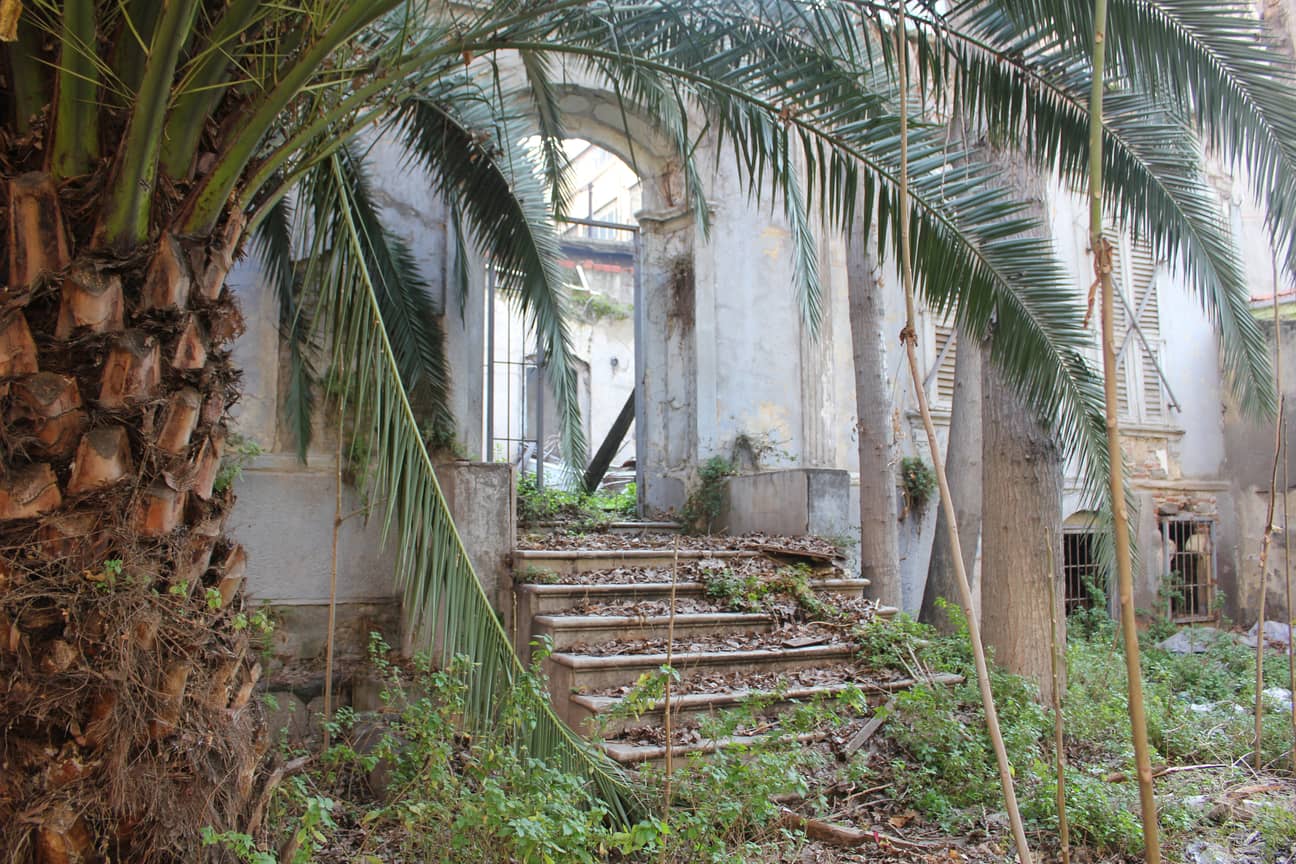Wilim Winter was a well-known Osijek lawyer and prominent Jewish activist, a leader of minority anti-zionist stream within the Jewish Community of Osijek Upper Town. The house was designed by the Viennese architect Heinrich Adam in 1896. This, once representative, Neo-Baroque and Historicist building consisted of Winter’s law office and 2 flats and was equally owned by Wilim and his wife, Julija, born Ungar.
Site Tag: Attraction
Hotel Royal
A late historicistic building in the city centre, designed as hotel and built in 1905. Owned by the prominent Jewish family Görög.
Kästenbaum – Korsky’s rental House
A three-storey corner house of Alfred Kästenbaum-Korsky, PhD, an attorney-at-law, was built in 1913, according to the main design of Viktor Beneš, an architect from Prague. The Kästenbaums (the Korskys since 1913)were a very prominent and wealthy Osijek Jewish family.
Weiszmayer, Sorger & Comp. Bank / Croatian Financial Agency
The house was designed by the Viennese architect Heinrich Adam in 1896. This, once representative, Neo-Baroque and Historicist building consisted of Winter’s law office and 2 flats. From the then archival cadastral documents it is evident that the house was equally owned by Wilim and his wifw, Julija, born Ungar, who intensly engaged in humanitarian work.
Mavro Rein’s House
The house of the eminent Osijek Rein family – lawyer Mavro Rein, PhD, and his son Ivan, a very important Osijek and Paris painter, whose rich opus was interrupted by his death in World War II.
Julius Pfeiffer House
A large house in Historicism style in the city centre, situated diagonally across the crossroads from famous Osijek Secession sequence of representative houses and villas.
Miskolczy Family House / Adult Education Centre
The building in the city centre used to belong to the Miskolczy family of very prominent OsijekJewish merchants and industrialists. A public Adult Education Centre is situated there now. The family also owned the house at 3 Županijska (County) Street, one of the most prestigeous Upper Town locations.
Union Steam Mill and Manager’s Villa
One of the rare Osijek Secession villas, built in 1906 according to the design of the Osijek builder Otto Struppi as a villa for Union steam mill’s director. After the First World War, it changed its owners and became a renowned Bathory-Weissmann sanatorium, having kept its hospital function until recently. Now it has been reconstructed to its initial beauty.
Kortijo (Jewish House)
Kortijos (cortejos) were the dwellings carrying the architectural characteristics brought to Izmir by the Sephardic Jews as they migrated from the Iberian Peninsula to the Ottoman Empire. Surrounded by the high walls of a two-storied building, the rooms of a kortijo would be facing a courtyard with a faucet or well, serving like a common guest room.
The Rabbinate Building
The Rabbinate building was built with support from the Rotschild of Vienna in 1840. The Rabbinate building is situated in the middle of a large garden surrounded by walls in the street once called the Hahambasi (Chief Rabbi) Street. The Rabbinate, as the name suggests, served as the offices of the Chief Rabbinate of Izmir.
Unleavened bread was made in a bakery erected adjacent to the Rabbinate in order to satisfy the needs of the Jewish community of Izmir during the “Passover” holiday. The central library and Yeshiva (theological school) of the Jewish community of Izmir had been located here and all the official affairs of the community were transacted at the Rabbinate by 1930.
The Rabbinate was evicted in 1997 and an office was rented at Alsancak to carry out the affairs of the community. Today, half of the roof of the building has collapsed and walls are distorted.
